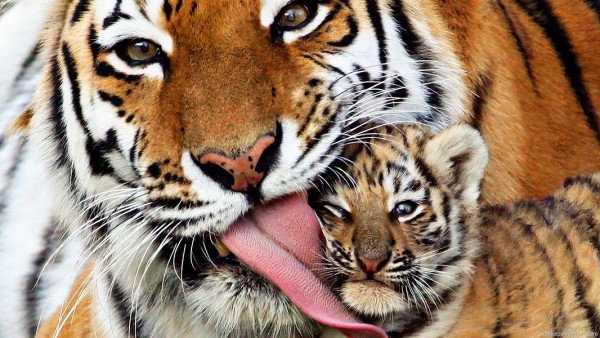By Ana Verayo, | April 11, 2016

Wild tiger populations are now increasing in 100 years, up to 22 percent.
For the first time ever, global tiger populations in the wild are now increasing, after almost a century according to conservation groups World Wildlife Fund (WWF) and Global Tiger Forum (GTF). Population numbers are now updated to 3,890 individuals based on the best estimate and data from conservation groups, environmentalists and biologists.
Like Us on Facebook
According to Marco Lambertini of WWF International, after decades of continuous decline, this is the first time that tiger numbers are now rising, adding that this is an indication of species development which can be further increased and protected by the government, local environmental groups and conservationists upon working together.
This newest tiger population number is based from the latest national tiger surveys including data obtained from the International Union for Conservation of Nature.
In 2010, wild tiger estimates were just around 3,200 which now shows a significant rise in a span of only a few years. This rise can be attributed to numerous factors such as more intensive and massive surveys, more efficient protection of the population and the additional population increases in India, Nepal, Bhutan and Russia.
This latest conservation effort is spearheaded by the Global Tiger Initiative that began in 2010 during the yearly annual Tiger Summit in Russia. During this conference, government leaders agreed to support the Tx2 program that focuses on doubling the wild tiger populations around the world per year until 2022 where recent studies believe that this type of conservation strategy can definitely yield positive results.
According to Rajesh Gopal from the Global Tiger Forum, this year's meeting will be critical since this marks the end of the first half of the program. The next step is for governments to identify the next actions to ensure that the future of Asian tigers will help them thrive in the wild.
This conference will occur for three days where nations are required to report their initiatives' progress and results towards achieving the Tx2 goal, including their next phase of the program.
According to the head of the WWF Tx2 Tiger Initiative, Michael Baltzer, this strict action plan will be pivotal in the next six years and even if global decline appears to slow down, their habitats are still threatened especially in Southeast Asia which will require more protection and initiative from the government.
These new findings will be presented during the 3rd Asia Ministerial Conference on Tiger Conservation in India.
-
Use of Coronavirus Pandemic Drones Raises Privacy Concerns: Drones Spread Fear, Local Officials Say

-
Coronavirus Hampers The Delivery Of Lockheed Martin F-35 Stealth Fighters For 2020

-
Instagram Speeds Up Plans to Add Account Memorialization Feature Due to COVID-19 Deaths

-
NASA: Perseverance Plans to Bring 'Mars Rock' to Earth in 2031

-
600 Dead And 3,000 In The Hospital as Iranians Believed Drinking High-Concentrations of Alcohol Can Cure The Coronavirus

-
600 Dead And 3,000 In The Hospital as Iranians Believed Drinking High-Concentrations of Alcohol Can Cure The Coronavirus

-
COVID-19: Doctors, Nurses Use Virtual Reality to Learn New Skills in Treating Coronavirus Patients







